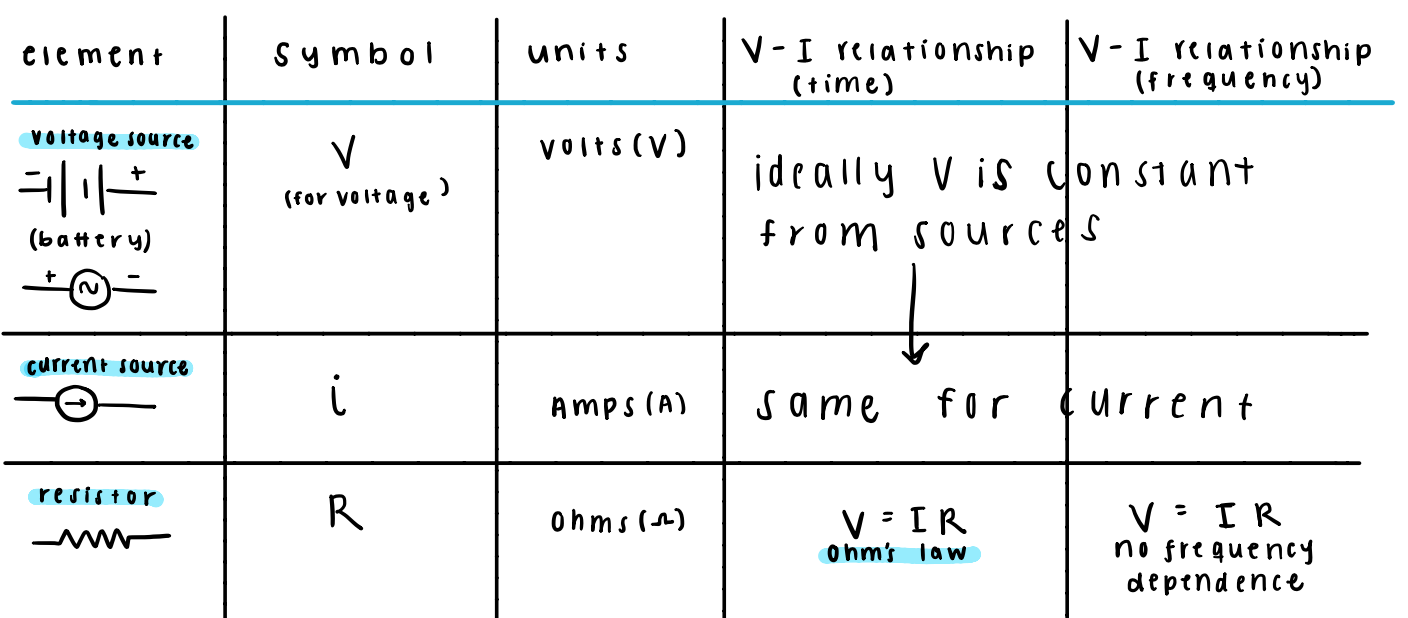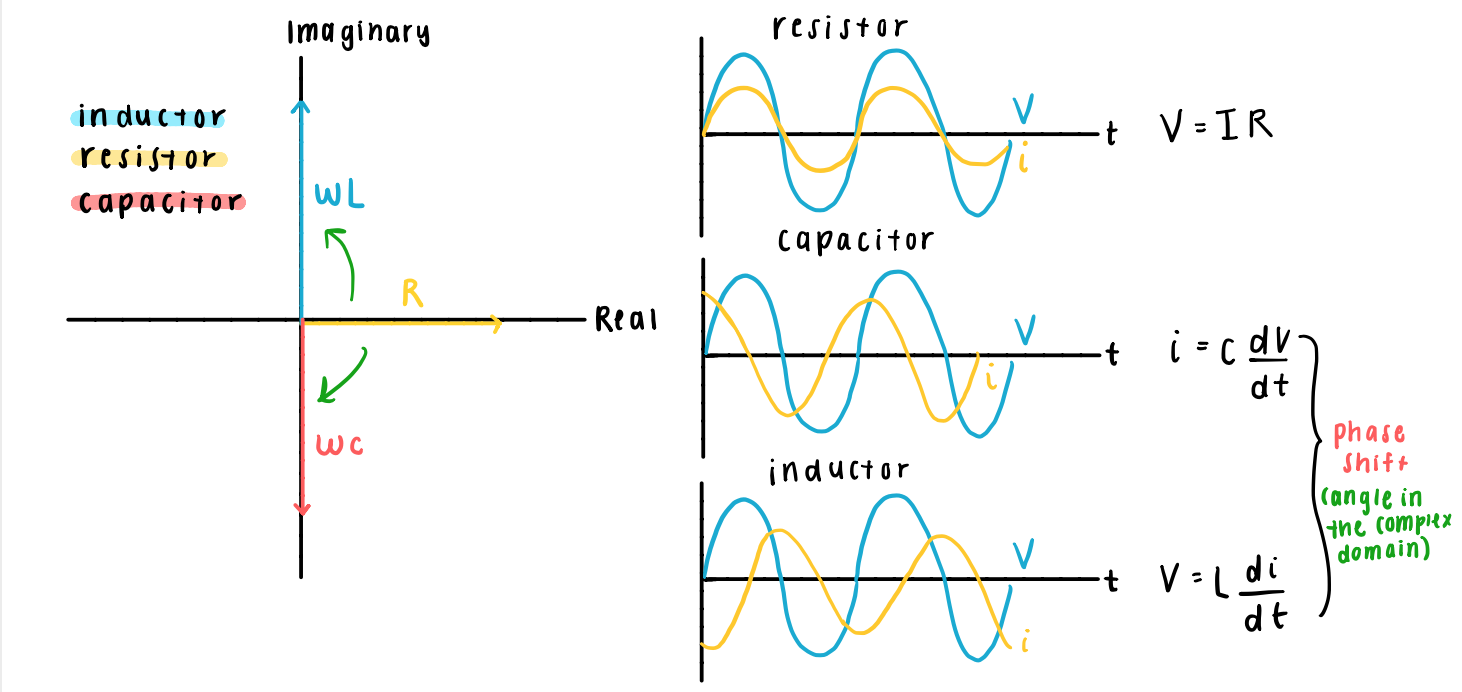Gened1080 Lecture "Circuits for Musicians"
Class Announcements
Updates on the SEC building, video compilation of acoustic composition projects, and announcements about final project proposals.
Review of circuit elements
As mentioned in previous lectures, there are several types of sources for circuits. Voltage sources, such as batteries, and current sources. In this video, we recap the properties of these elements and how they interact with resistors.

Capacitors
Capacitors are used as a way to store energy, create oscillations, timers and more in circuits. In this video, we delve into the physical properties of a capacitor and how it works.

We can also derive the current-voltage relationship of a capacitor as a function of time and frequency.

Inductors
An inductor is a passive component that stores energy in a magnetic field when current flows through it, typically made of a coil of wire. In this video, we explore how inductors work and what formulas describe its current-voltage relationship as a function of time and frequency.

Relationship between circuit elements
The impedance of capacitors, resistors, and inductors can be graphed together on a complex plane to visualize what the effect each component has on output current when an input voltage is applied. In this video, we graph and analyze these relationships.

Diodes
Diodes are essentially a one-way switch for current in a circuit. In this video, we discuss the current-voltage relationship of a diode as a function of time and frequency and how we can think of it in terms of our water pipe analogy.

Transistors
Transistors are a circuit component that can be used as an amplifier or a switch. There are two basic types of transisors, NPN and PNP. In this video, we explore the differences between these two types and explore applications of transistors in power amplifiers for sound.

Op Amps
Op-amps are voltage amplifiers designed to be used along with other circuit components (resistors, capacitors, etc.) to perform a desired mathematical operation on an input voltage. In this video, we go over op-amp rules in circuit design and an example of how it functions to create voltage gain.
